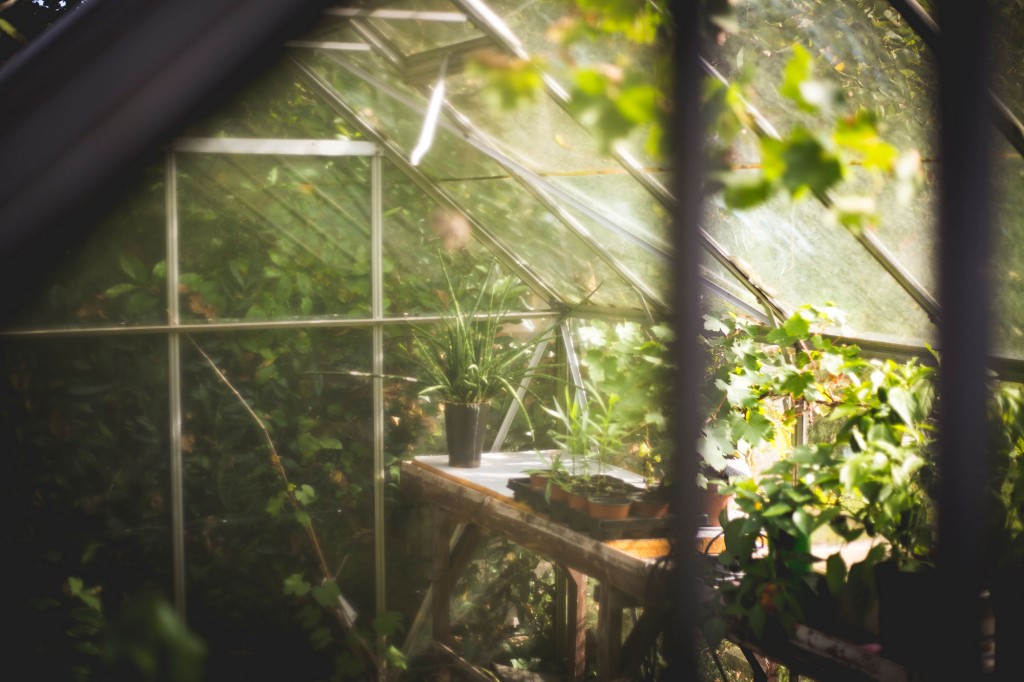Therapeutic gardens are far from new, but they fell out of favor for at least 30 years or so due to several factors. These included society’s reduced focus on gardening and nature in general, skyrocketing property values that saw much of the open space in any given town sold for development and the urbanization of society.
In the past few years, a resurgence of gardening has taken place, as evidenced by the growth of pocket parks and the reclamation of abandoned lots in even the most urban areas to be transformed into community gardens. Few folks could ever argue that “regular” gardening isn’t therapeutic in  itself, but gardening programs specially designated as “therapeutic” need to consider many issues.
itself, but gardening programs specially designated as “therapeutic” need to consider many issues.
Recent research has shown that certain bacteria and other nutrients found in soil can, if absorbed in sufficient levels, potentially work with chemicals in the body to help reduce anxiety and depression and, in some cases, increase the strength of the immune system. Demonstrated with the use of lab mice, these interactions have been shown to have measurable benefits. This, combined with a resurgent emphasis on nature-based programming and lifestyles, has led to a growing interest in gardening.
As a result, therapeutic gardens have begun to appear on the landscape. My therapeutic farm program in Wolcott, Connecticut, has focused on this type of programming since before we built our first office there.
In this column, I’d like to help nonprofit clinicians by covering some of the issues that are typically encountered when setting up therapeutic gardening programs. Though far from exhaustive, this information should provide the necessary foundation to implement a program in your community.
Before setting up a program, you need to see if there is interest in your area for such a program. Once that need and interest are established, be realistic about the abilities of your client base. Can they physically perform the work required, including bending and lifting? If not, can you make the required accommodations to help them be successful? Are your clients emotionally and psychologically stable enough to use the equipment for daily gardening, or would you need to have skilled staff? Do you have enough staff to cover the duties that clients and volunteers cannot? Are there accessibility issues in and around your garden that need to be addressed? Can clients get from the parking area to the garden area safely? Can a person in a wheelchair or with limited mobility participate? If not, what can be done to overcome this issue?
We used crushed stone in areas where people come into the garden. This stone, which doesn’t have a weed barrier underneath, allowed grass to grow. This returned the entry area to a natural look while still providing a packed surface that is suitable to walkers and wheelchairs. Most of the garden is in the ground using slightly raised beds. However, we consulted an engineer who designed and built (donating the labor) four large raised beds that meet the standards of the Americans with Disabilities Act. The raised beds provide enough room for a wheelchair to get under them so that folks of all abilities can participate without concern.
Sometimes you need to be more creative than normal. For instance, some of our clients were restricted from working in the sun because of medical or medication-related reasons, but they still wanted to participate in therapeutic gardening. We had lighting installed so they could come in the evening to garden. The expense for such lighting can vary greatly (from hundreds of dollars to thousands of dollars) depending on the types of lighting used and the distance between existing electricity and the garden areas. We had two areas done for about $3,000, including parts and labor and electrical outlets as well.
Not every clinical nonprofit program is going to have an infrastructure that includes talented gardeners and farmers, and many programs may lack the resources to hire people skilled in these areas. But this needn’t stop you from your goal of opening a therapeutic garden.
gardeners and farmers, and many programs may lack the resources to hire people skilled in these areas. But this needn’t stop you from your goal of opening a therapeutic garden.
Contact your local extension service, Department of Energy and Environmental Protection, farmers and other programs and ask for some guidance. Many will be more than happy to assist, especially once they know that you have no plans to commercially market your produce. Internet searches (including YouTube) and your local library can be valuable resources as well. Many times, retirees are looking for projects to work on, and a therapeutic gardening program may be exactly what they’re looking for. Contact local retirement centers and related programs. Veterans groups may also offer assistance.
After identifying a safe spot for your therapeutic garden, you may find yourself in over your head in terms of prepping the area. This aspect can take a season or two to complete, so don’t allow yourself to become discouraged. You likely will have a few failed attempts before establishing a garden area that will work.
When we started, we found that we had a bumper crop of large rocks and poorly drained soil, as well as no running water in the area. In fact, since 1860, the only watering that had happened took place via buckets from a local brook. Moving rocks and amending the soil was the first priority; finding a way to water was the second. Amending took the form of adding compost, working on drainage ditches and adding soil as needed. We also hooked up a pump from the brook to fill large containers for watering. Every year, we try to add a feature such as a seasonal high tunnel (greenhouse), well water and electricity.
Many federal programs can assist existing therapeutic gardens via grants that cover part or most of the cost of certain upgrades. The key to most of these grants is that you must show that you are currently using this area. It need not be pretty or overly productive, but it needs to show that it is an “established” area that could use some improvement. This can be as simple as establishing a makeshift garden one year prior to applying for the assistance. Don’t let red tape discourage you. Read the requirements and find a way to meet the requirements.
Don’t let the challenges prevent you from opening a therapeutic garden in your area. Set a goal, formulate the plan and implement it in stages. Soon you will find that more than vegetables are sprouting from the soil; a growing community often will follow.
****

“Doc Warren” Corson III is a counselor, educator, writer and the founder, developer, and clinical and executive director of Community Counseling Centers of Central CT Inc. (www.docwarren.org) and Pillwillop Therapeutic Farm (www.pillwillop.org). Contact him at docwarren@docwarren.org.
